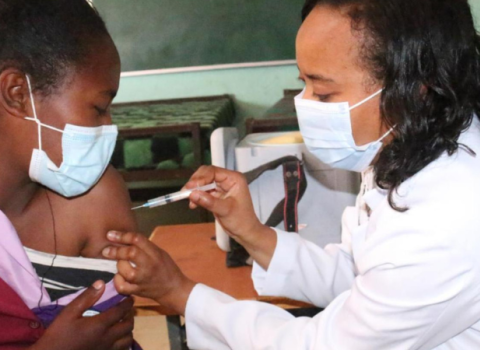
Dutch company Prosensa NV last month reported positive results in a clinical trial of a treatment that for the first time promises to treat the root cause of the disorder by enabling patients to begin producing the muscle protein dystrophin.
Prosensa’s treatment addresses the specific genetic mutation that prevents 13 per cent of boys with the inherited disease from generating this essential element of muscle. Products based on the same technology will be needed for patients with different mutations in the dystrophin gene, and parents and clinicians are concerned that if each needs separate approval – as is the case at present – there will be no financial incentive for companies to develop these therapies.
Regulation
The first steps have now been taken in tackling the regulatory issues surrounding the unprecedented level of personalisation inherent in commercialising therapies for treating Duchennne muscular dystrophy and associated inherited conditions. Almost one hundred DMD experts, including clinicians involved in current clinical trials, patient/parent groups and pharmaceutical companies working on Duchenne therapies, met last month at the London offices of the European Medicines Agency (EMEA), to start discussions on how to deal with the fact that a different therapy will be needed to treat each different mutation on the DMD gene.
The usual procedure in which pharmaceutical companies apply for marketing authorisation for each drug individually is not appropriate for treatments based on the same basic construct but targeting different mutations, said Francesco Muntoni, chair of the Treat-NMD network, which organised the meeting. “For some of these new therapies a far broader discussion [is] needed to establish the overarching strategies and find out how the regulatory authorities would view applications for these highly similar compounds,” Muntoni said.
The therapies in question are based on antisense oligonucleotides, which have to capacity to override the faulty part of the dystrophin gene. In normal circumstances these faults are roadblocks that completely prevent the production of dystrophin, an essential structural component of muscle. Skipping over the fault allows an incomplete, but functional, form of dystrophin to be generated.
Positive results
Prosensa’s recent clinical trial results of using antisense oligonucleotides to treating boys affected by DMD suggest they could provide benefits for the majority of affected individuals. The company, based in Leiden, the Netherlands last month reported positive results in the Phase I/II study of systemically delivered PRO-051, showing the product induced dystrophin expression in a dose-related manner. The company is now preparing for a double-blinded Phase III trial.
PRO-051 is expected to be effective in 13 per cent of DMD patients who have a mutation at exon 51 of the dystrophin gene. Prosensa has collaborated with Treat-NMD to identify patients who would be suitable for treatment with PRO-051, using the network’s global database to select 300 patients from 21 countries who meet the inclusion criteria.
Although more than 80 percent of Duchenne boys could potentially benefit from exon-skipping, each exon targeted requires a unique antisense oligonucleotide. This means that treating all the different mutations known to cause DMD will require the development of large numbers of antisense oligonucleotides, each treating only a small subset of the patient population.
In other words, such therapies will require a personalised medicine approach that is currently without precedent for a genetic disease. Patient groups and clinicians are concerned that existing regulatory and product development paths threaten the viability of this promising technology.
Plotting a pathway
The meeting with EMEA, began to plot a pathway to ease these drugs through the approval process.
Agnes Saint Raymond, Head of Sector for Scientific Advice, Orphan Drugs and Paediatric Medicinal Products at EMEA, said the agency welcomed the opportunity to discuss these issues. “These are promising times for children and adults with Duchenne, and regulatory authorities strongly encourage early collaboration in drug development to maximise the chances of success at approval time.”
Treat-NMD said EMEA representatives indicated they are prepared to engage in more detailed discussions on the development of a regulatory pathway and discuss alternative ways forward for very small populations. Even though the treatment for each exon may have to be approved individually, it may not be necessary to do separate studies for each of them, as data can be shared and/or extrapolated.
Antisense oligonucleotide therapies hold the prospect of a breakthrough in treating DMD, said Nick Catlin, CEO of the charity, Action Duchenne. “But patients and parents are concerned about being left in a position where drugs are developed for only a minority of patients and the majority are left without access to treatments.”
He was heartened that the meeting with EMEA shows the regulator is open to hearing the views of patients and the medical community. “We are confident that by establishing this dialogue with the regulators we will be able to reach a solution that is best for our boys.”





 A unique international forum for public research organisations and companies to connect their external engagement with strategic interests around their R&D system.
A unique international forum for public research organisations and companies to connect their external engagement with strategic interests around their R&D system.